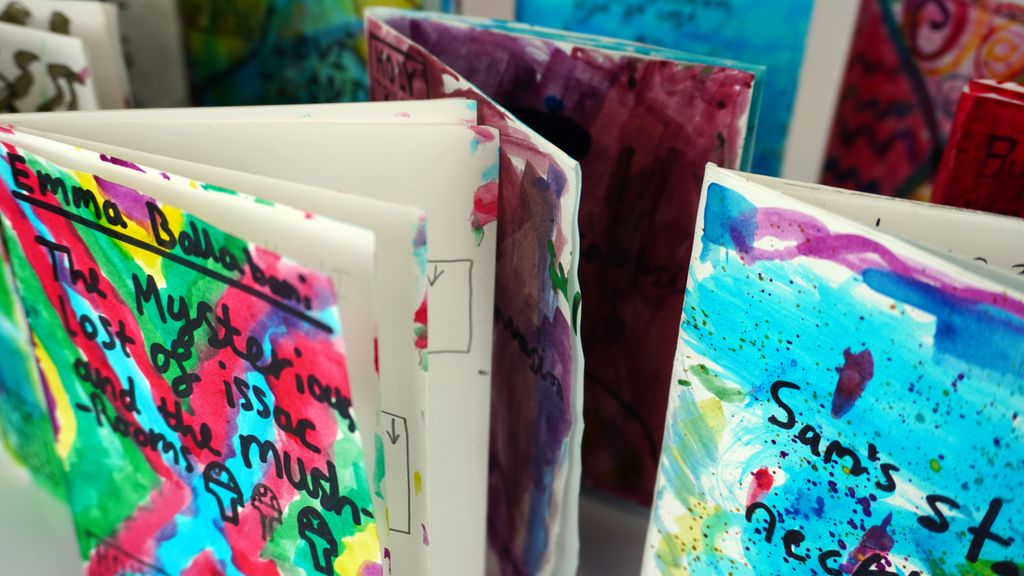Bust of Virginia Woolf
Stephen Tomlin, 1931Virginia Woolf is best known for her innovative writing, feminism and her association with the Bloomsbury Group of artists and writers. Virginia explored literary styles and shifted conventional ideas of novel writing. She is well known for the inventive use of ‘stream of consciousness’ storytelling in her books such as Mrs Dalloway (1925) and To The Lighthouse (1927). She is considered by many to be one of the most important modern authors of her time.
The Virginia Woolf bust is part of RePresenting Bloomsbury
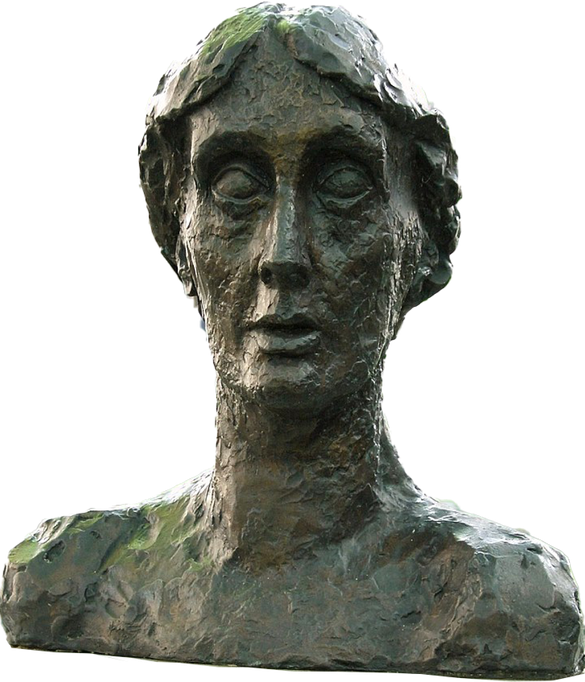
Virginia Woolf is best known for her innovative writing, feminism and her association with the Bloomsbury Group of artists and writers. Virginia explored literary styles and shifted conventional ideas of novel writing. She is well known for the inventive use of ‘stream of consciousness’ storytelling in her books such as Mrs Dalloway (1925) and To The Lighthouse (1927). She is considered by many to be one of the most important modern authors of her time.
The Virginia Woolf bust is part of RePresenting Bloomsbury
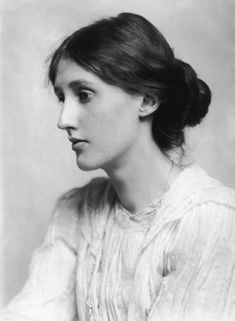
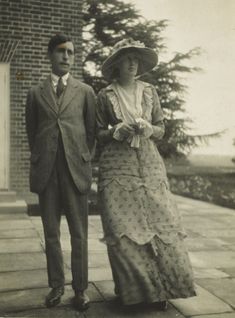



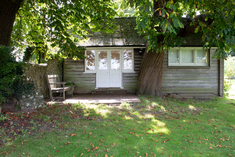
About Virginia Woolf
“She was a successful and prolific author, a committed feminist, pacifist, champion of women’s rights and the importance of mental health ”
Claire Nicholson, 2023.
Virginia Woolf was born in 1882 to a large, wealthy, blended family in London. Her father, Leslie Stephen, was an author, historian and humanist whose father drafted the Slavery Abolition Act 1833, which ended slavery in Britain’s colonies. Her mother, Julia, was born in India to a family working for the colonial East India Company. After her parents died, Virginia moved with her sister, artist Vanessa Bell and brothers Thoby and Adrian to Gordon Square, Bloomsbury. Here, with friends, they established the Bloomsbury Group of like-minded creatives and thinkers.
Virginia was working on her first novel, The Voyage Out (1915), when she married Leonard Woolf. Together they set up the Hogarth Press, which published Virginia and Leonard’s work as well as other authors, including translations of Sigmund Freud’s work and T.S Eliot’s The Waste Land (1923).
Virginia, Jewishness and race
Virginia and Leonard were happily married, despite her extreme anxiety about his Jewish heritage. In her diaries and letters, Virginia clearly presents her established anti-Semitic ideas about Jewish people, describing physical and cultural stereotypes using offensive words and terms. This extended to her husband and his family. The anti-Semitism spilled into her work, such as in The Years (1937) and early versions of The Duchess and the Jeweller (1938) and is often presented as a physical abhorrence.
Her diaries and letters also present challenging, offensive comments and descriptions of race, class and ability which we would find unacceptable today. In 1910 Virginia took part in the Dreadnought Hoax where five friends dressed up as ‘Abyssinian Royals’ wearing theatrical costumes and ‘blackface’ as an elaborate prank to trick the Royal Navy that they were members of an African royal family. ‘Her part in this hoax illustrates racial stereotypes and distortions typical of someone who was a product of imperialist attitudes of the time’ (Allen, S, Virginia Woolf, 2023).
Virginia, feminism and sexuality
Virginia Woolf is well recognised as a pioneering feminist thinker, examining the experiences of women of her class and race, and universal themes of education. Virginia’s A Room of One’s Own (1929) comments that, "a woman must have money and a room of her own if she is to write fiction.” The essay, using metaphors, explores women’s intellectual and creative abilities and how they were restricted by gender inequality. The essay has inspired many feminists and writers.
Virginia has also become an iconic figure within LGBTQIA+ communities. Her intense and intimate relationship with Vita Sackville West during the 1920s inspired one of her best known works. Orlando: A Biography (1928) explores gender fluidity, sexuality and social structures and has been described as the first trans novel in English literature.
Virginia Woolf suffered with mental health illness during her life and she died by suicide at Rodmell, Sussex in 1941, aged 59.
This bronze bust was copied from the original work by artist, Stephen Tomlin. The original plaster bust is at Charleston Farmhouse, Sussex which was the home of Virginia Woolf’s sister, Vanessa Bell. Stephen Tomlin was part of the Bloomsbury Group of artists and thinkers.
The bronze bust in Tavistock Square was bought by the Virginia Woolf Society of Great Britain in 2003 and unveiled by Anne Olivier Bell in 2004. It marks Virginia Woolf’s long connection with Bloomsbury, where she lived for over 35 years.
Click on the link below to read a poem about Virginia Woolf by writer Bianca Manu
Community voices
We worked with Camden communities and artists to explore Virginia Woolf. Together they made artworks and sound pieces informed by her life and work. These are presented below.
Belsize Synagogue LGBTQIA+ group
Artists Anna Reading and Kat Hudson worked together with a LGBTQIA+ Jewish group based at Belsize Synagogue during the summer of 2023 to explore the life and work of Virginia Woolf. The creative outcomes of these workshops are presented through a book, combined and layered to reflect the collaborative discursive environment of the sessions. The group were introduced to Virginia Woolf through a presentation from a specialist on her work, and through sections of her texts.
Discussions in the sessions varied from shared interests to deeper conversations around overlapping identities. These conversations were documented through making; including collage, drawing, mono-printing, and textiles. This documentation has been brought together alongside a series of quotes from Virginia Woolf’s dairy and poetry and responses from the participants themselves.
Voices of Belsize Square Synagogue
The group also worked with a sound artist, Laura Owen and the recording their conversations (left). Rose is a Rabbi, educator and creative producer who grew up in north west London and is currently living in Camden. She worked with the team to organise workshops at Belsize Square Synagogue and took part in the workshops with Queer, Jewish young people as part of the RePresenting Bloomsbury project. Rose talks about the conversations and ideas cultivated at the workshops and how Virginia Woolf’s husband, Leonard, a Jewish activist and fierce anti-fascist became the focus of many of the group’s discussions.
Holy Trinity Primary School, Camden
Over the summer term 2023, artists Anna Reading and Kat Hudson also worked with young people in years 3 and 5 at Holy Trinity Primary school.
Year 5, age 9 -1
"She encourages women in particular. She helps them to unlock their potential and reach their goals. Women still aren’t equal in some parts of the world, so we should keep her statue, to remind people of that." A, Year 5.
Inspired by Woolf’s Hogarth Press the young people created their own stories and became publishers themselves. Over two days of talking and making they focussed on drawing and creating visual narratives to explore ideas of collaboration, mindfulness and self-expression. They used sections of Virginia Woolf’s text to create ‘found’ poetry works and experimented with manual letterpress techniques. Discussions around Virginia Woolf’s ideas and work took place, as well as the historical context of her story. This inspired the young people to craft their story’s using a visual narrative with block colour, multiple shapes, drawing and text. The resulting artworks are beautiful handmade, folded zine-style story books, vivid with imagination and colour and published by the ‘Holy Trinity Press’.
Year 3, age 7 - 8
"It’s not nice that she didn’t like Jewish people. That’s not ok and we wouldn’t like that at our school, but she wasn’t bad all the time." L, Year 3.
The artists and young people focussed on Virginia Woolf’s essay, a Room of One’s Own. They worked together, exploring and interpreting themes from the text such as privilege, equality and fostering creative expression. They considered what that might mean to the class today. Working with mixed media, drawing, collage and sculpture, they found ways to celebrate the things that help to nourish them as young artists and feed creativity today.
"She was a good person because she wanted to balance the rights of men and women." K, Year 3
The young people found ways to express their own passions and sources of inspiration, focusing on diverse topics such as access to nature, imaginative spaces, transport, healthy living, relaxation techniques and entertainment. Using clay, found and recycled materials, they created 3D ingredients to bring to an imaginative picnic, building fantastical scenes as mixed media sculptures - each one as unique as the artist who made it - the only limitation being the scale of the paper plates they built upon.
Voices of Holy Trinity Primary School
You can hear sounds from the Year 3 and Year 5 creative workshops at Holy Trinity Primary School (left). Students talk about the art they created in the workshops and who they would commemorate if they were to create a piece of art to remember someone special.


